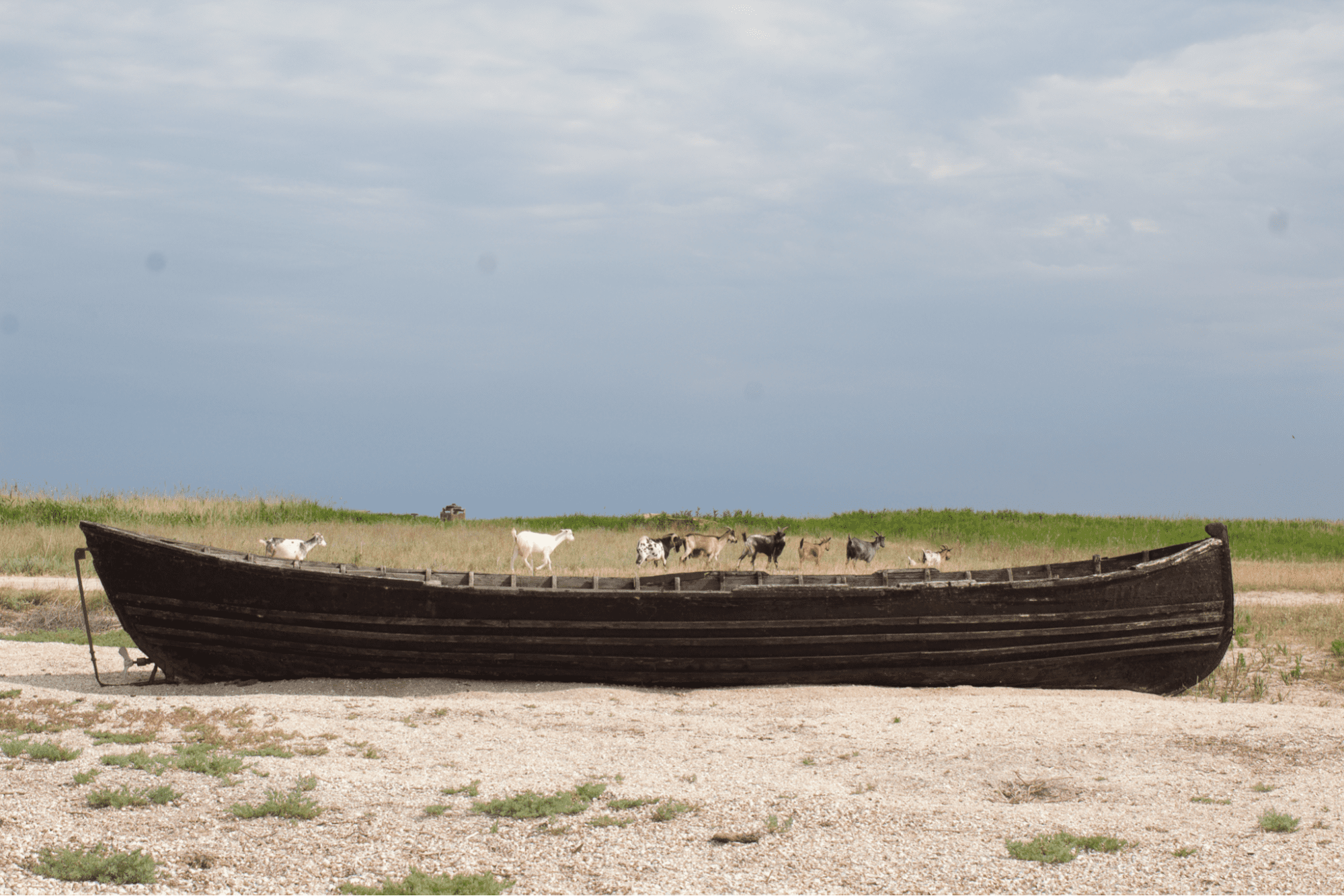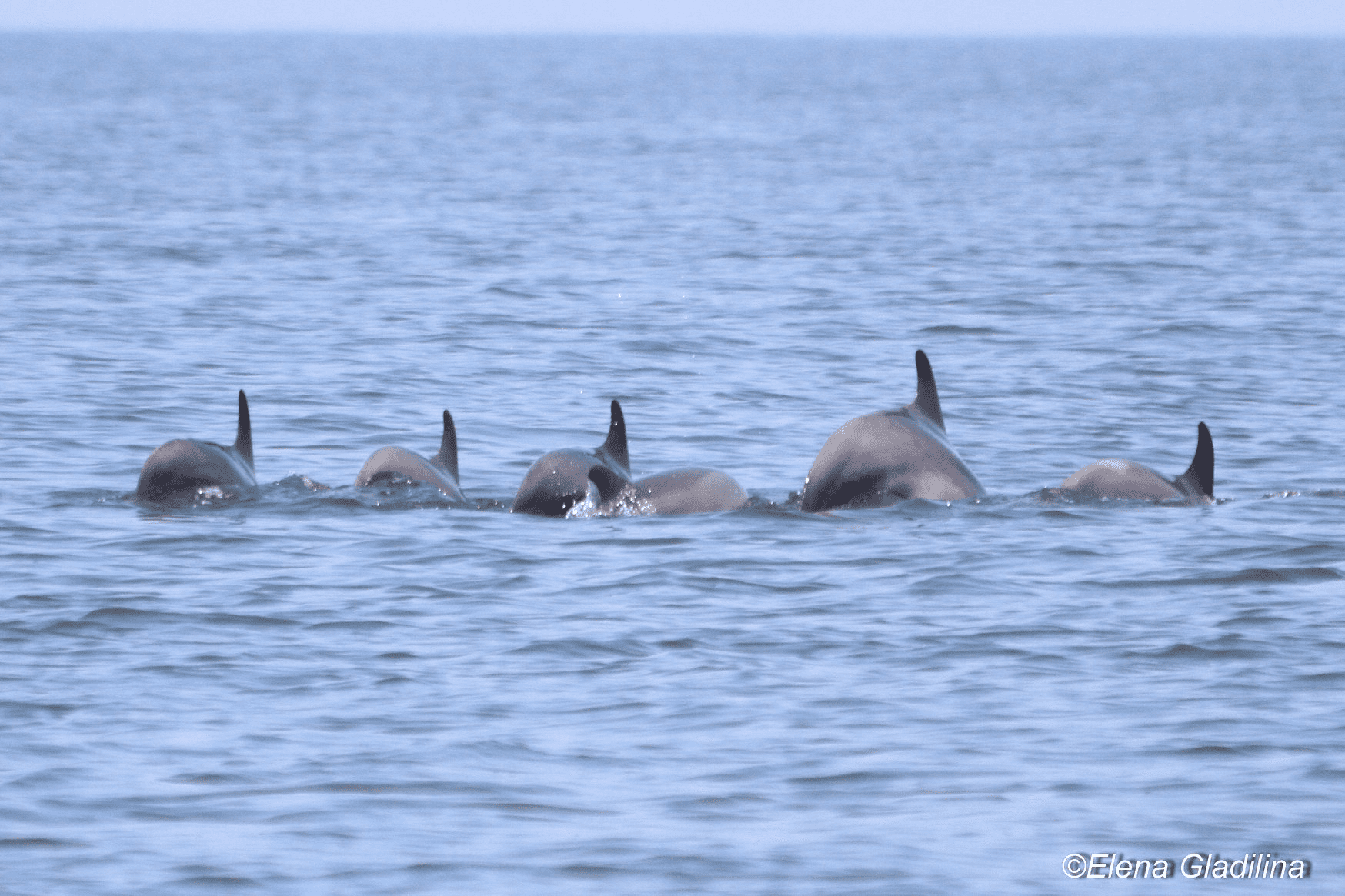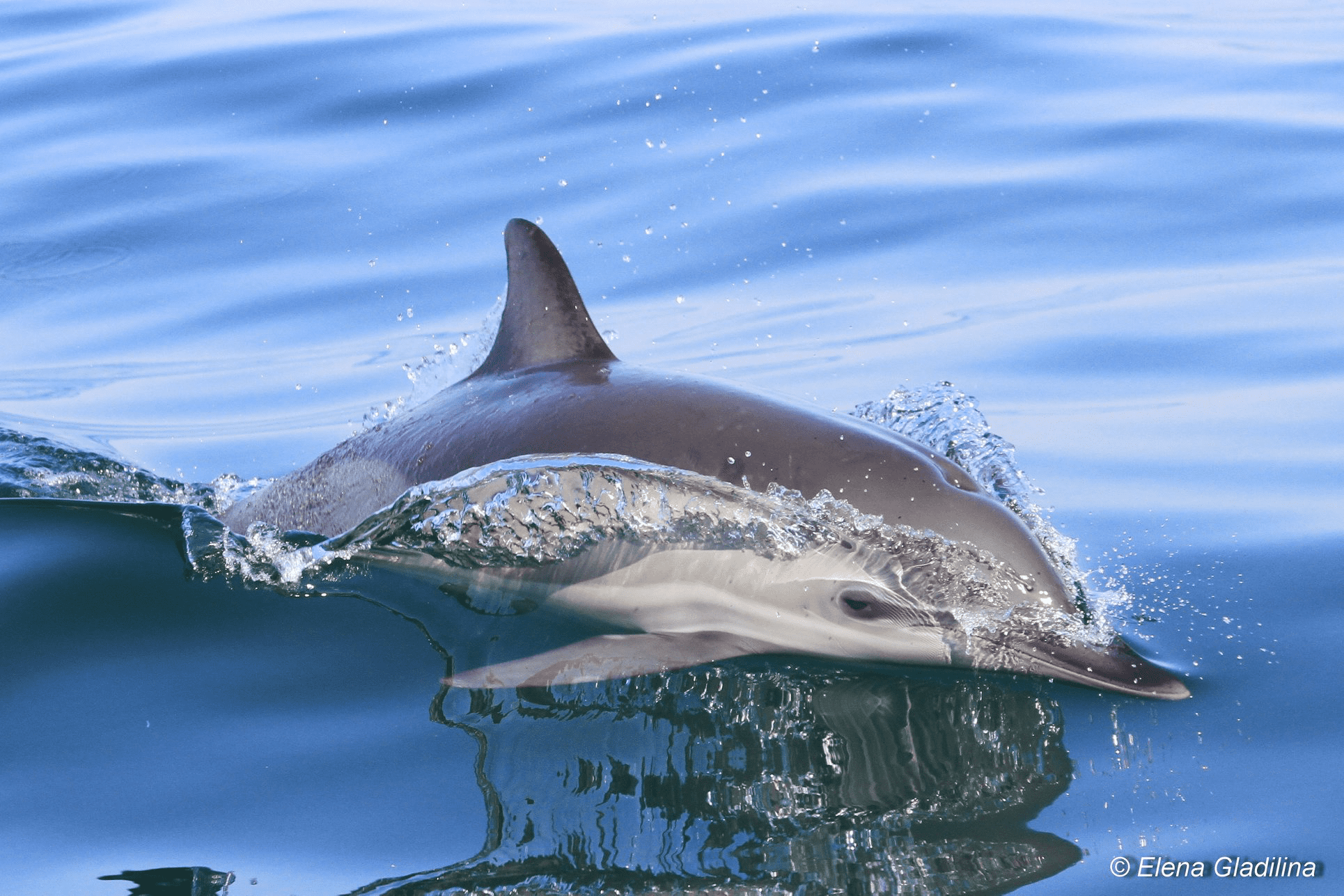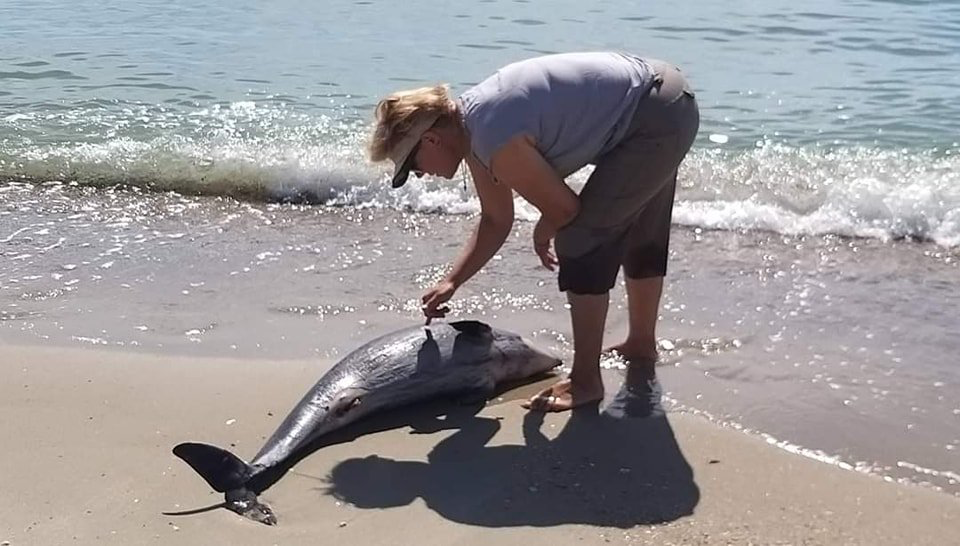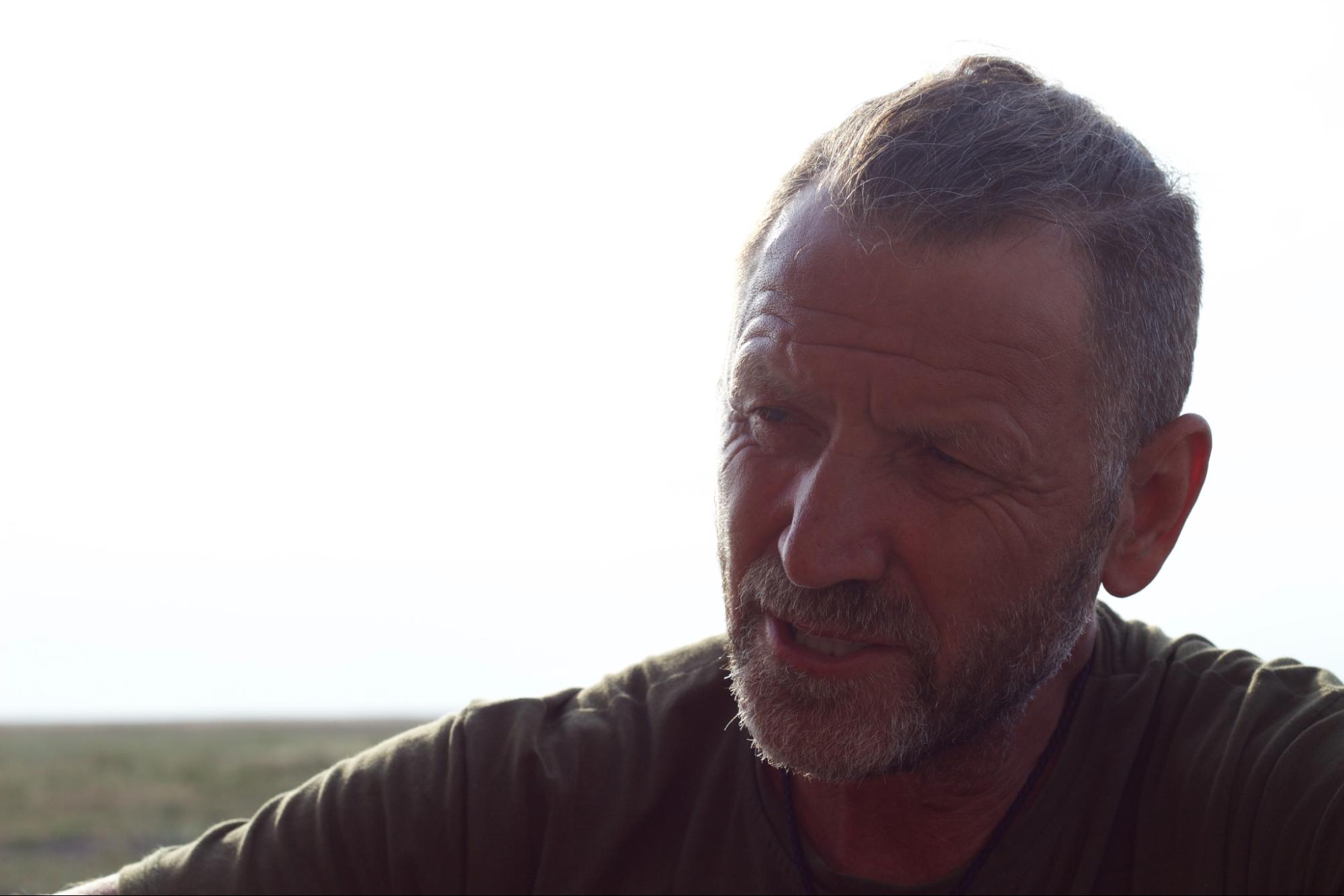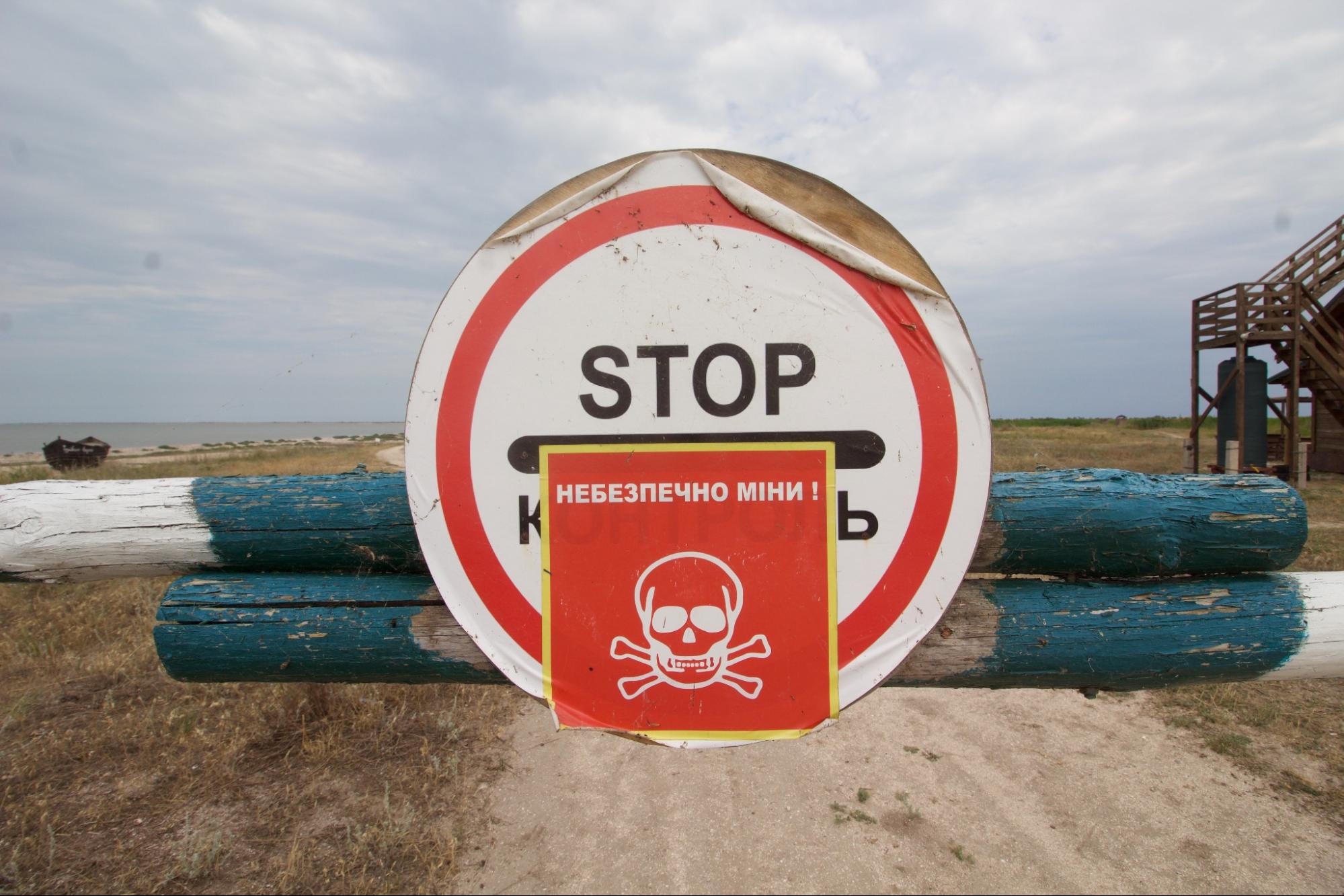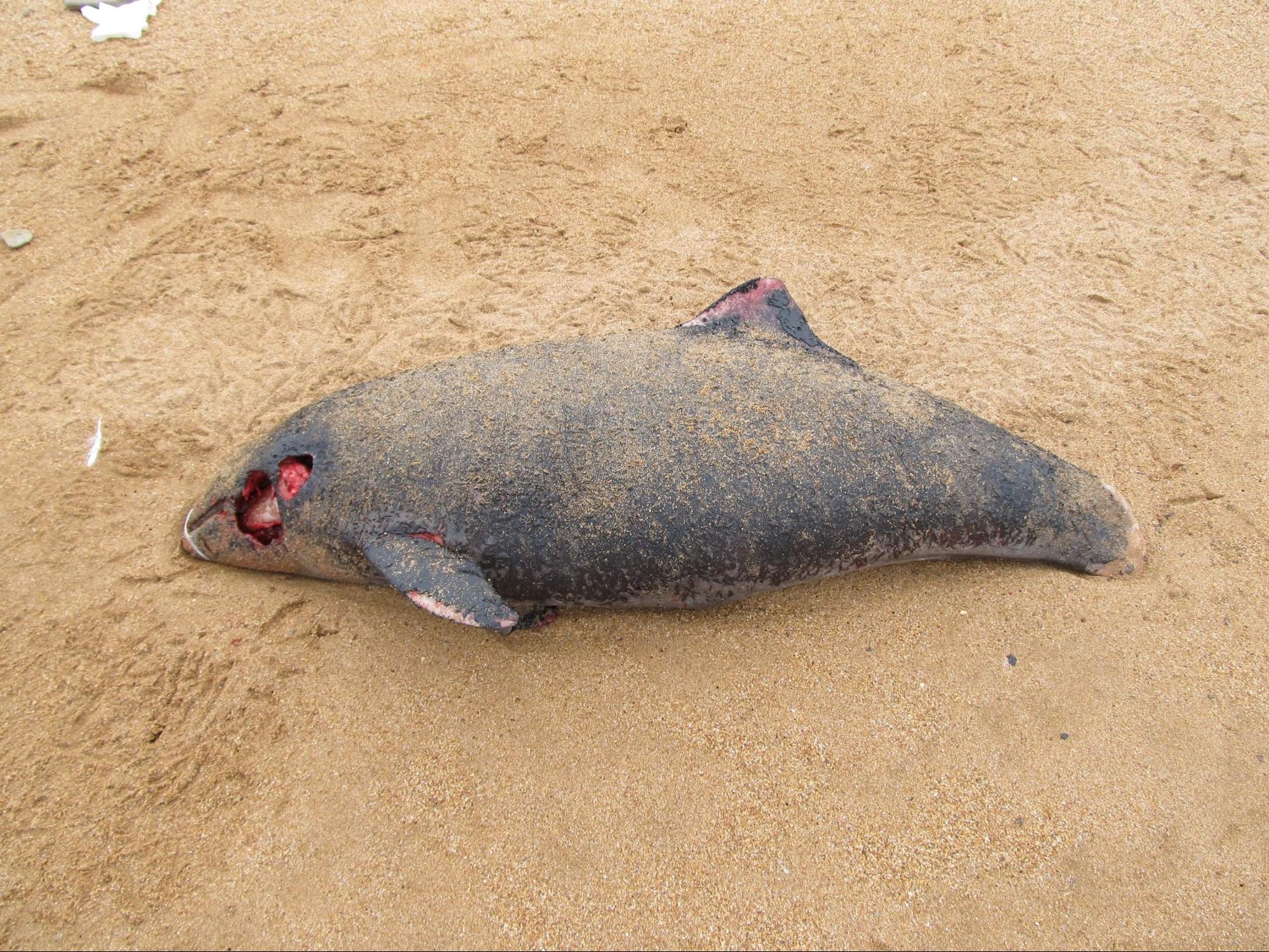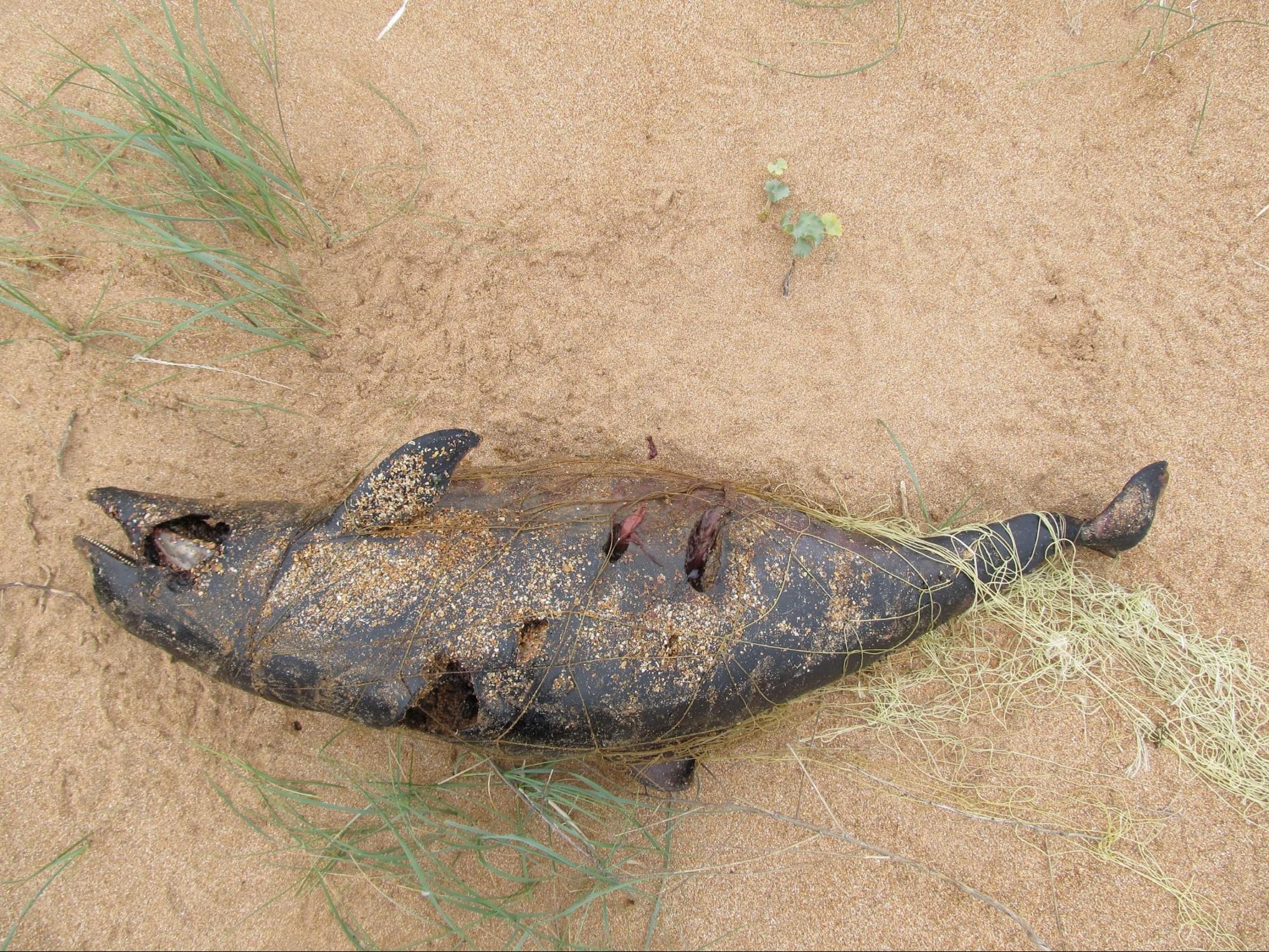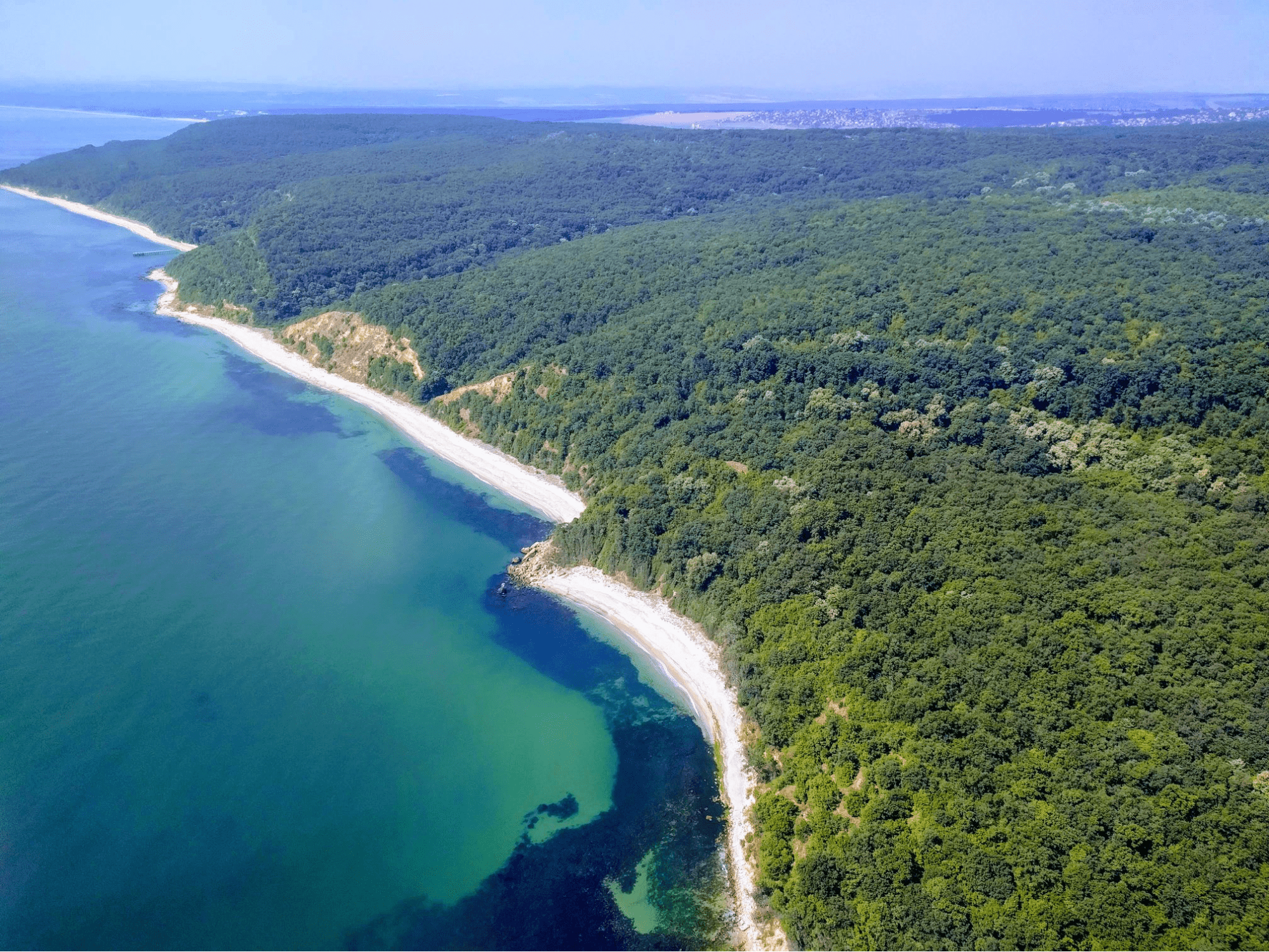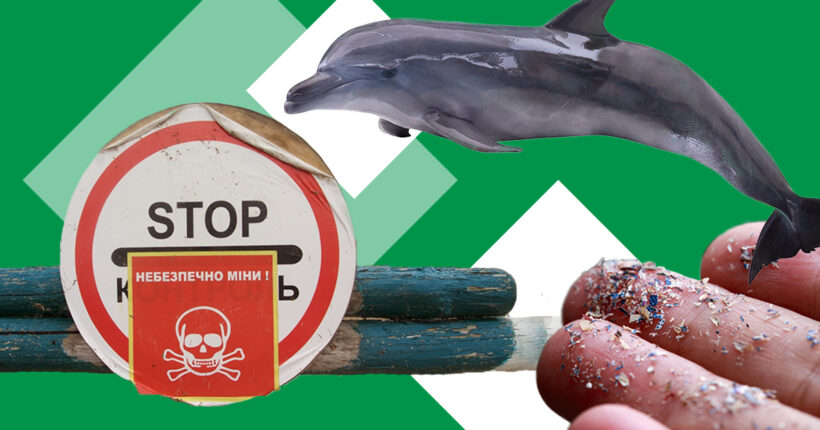
Recently, Rubryka visited the Tuzly Lagoons National Nature Park to find out how harmful russia's war is to the environment. This article is the third in a series of long reads about the problems caused by military operations on the Black Sea coast and is dedicated to one of the saddest topics—the death of dolphins.
We discuss together with Ivan Rusiev, Tuzly Lagoons Park Director, and Pavlo Holdin, Ukrainian zoologist, paleontologist, and leading researcher at Schmalhausen Institute of Zoology, why national park workers and zoologists sound the alarm and in what ways we will have to restore the populations of these beautiful sea inhabitants.
What is the problem?
There have never been so many deaths as from the war
Dolphins are the most intelligent sea creatures in the Red Book of Ukraine. In addition, dolphins are protected by the IUCN Red List, the Black Sea Red Data Book, and the Agreement on the Conservation of Cetaceans ACCOBAMS. All three species of dolphins living in Ukrainian waters are protected. However, they continue to die in huge numbers.
On the territory of the Tuzly Lagoons park in the Odesa region, park employees and the Ukrainian military stationed on the Black Sea coast have repeatedly found dead dolphins. As the park office later told us, they don't know the exact number of mammals dead because new cases constantly appear: sometimes, employees find several dead animals on the shore at once.
"Very few dolphins exist in the Black Sea, but there have never been so many deaths as from the war," Ivan Rusiev talks about the problem of dead dolphins. He called it the most significant issue. "Their numbers are meager; they die very quickly, and restoring the numbers is challenging."
The BioEcoLinks environmental research and protection organization, which has the Dolphins of the Sea of Azov and the Black Sea blog, states that since February, there have been an unusually high number of detected cases, and the death peak occurred in March, May, and June. They still don't stop.
"So far, we are talking about several hundred confirmed photos and videos of cases [of dead dolphins, ed.] on the shore," the organization said in a statement. "Of these, more than a hundred are in Ukraine, mainly in Crimea and the south of the Odesa region. The total number hasn't been clarified yet, and data collection continues. However, more animals die than are washed ashore. The final results of the assessment are expected next year."
The observation that most cases in Ukraine were recorded in Crimea and the Odesa region is not accidental. Scientists in Romania, Bulgaria, and Turkey also reported about washed-up mammals, which makes the problem not only Ukrainian but international and allows us to argue that military operations in the Black Sea harm the Ukrainian environment and the entire planet.
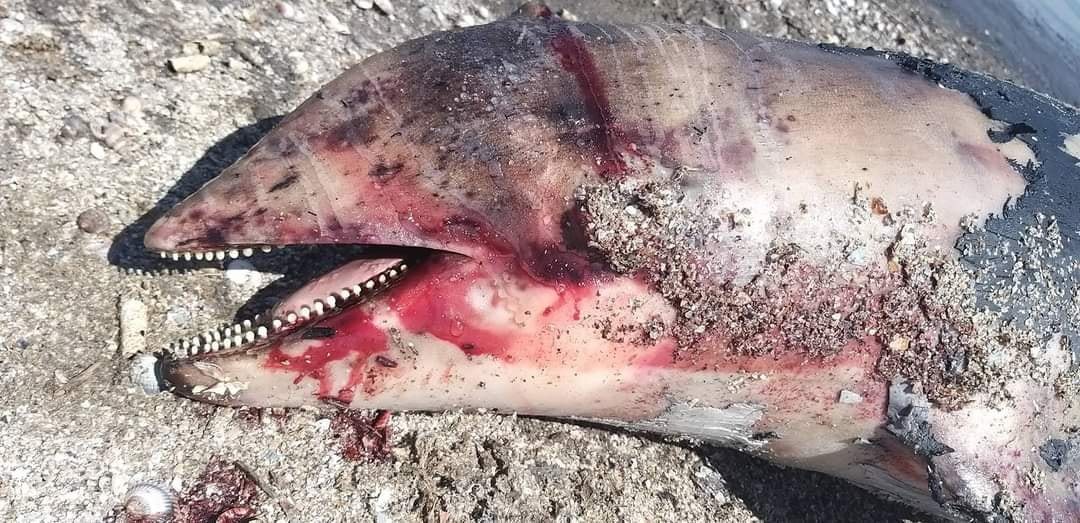
Photo: Iryna Vykhristiuk, Tuzly Lagoons National Park Director, next to one of the three dead dolphins washed ashore, which the park staff found on July 4. The park staff took the photo
Why is it happening?
Warships blind the dolphins
It's a known fact that the russians blocked shipping in the Black Sea and mined its northwestern part. The fighting involves surface combatants and submarines using sonars that emit potent signals. These signals, Ivan Rusiev says, are detrimental to dolphins: they disable their navigation and echolocation organs
The military on ships and submarines uses special sonar for navigation, emitting powerful and low-frequency signals affecting the dolphin's inner ear, the organ of navigation and hearing. Because of this, the animal becomes "blind." Having lost their orientation, animals lose acoustic control over the environment:
"The stricken dolphin cannot orient and begins to dangle in the sea in flocks. They're like blind people. "Blind" dolphins are in stress and panic, and they cannot navigate in space. A blind dolphin is a dead dolphin. It cannot navigate, hits the rocks, and can hit a mine. It cannot, most importantly, catch a fish, and its body is very quickly depleted."
Fishing nets turn into death traps
"For the harbor porpoise [one of the species of porpoise similar to dolphins that live in the Black Sea, ed.], a critical factor affecting the species' number in recent decades is accidental death in fishing nets," says zoologist Pavlo Holdin. "As we discovered in recent years, up to 20 thousand porpoises die in the Black Sea every year."
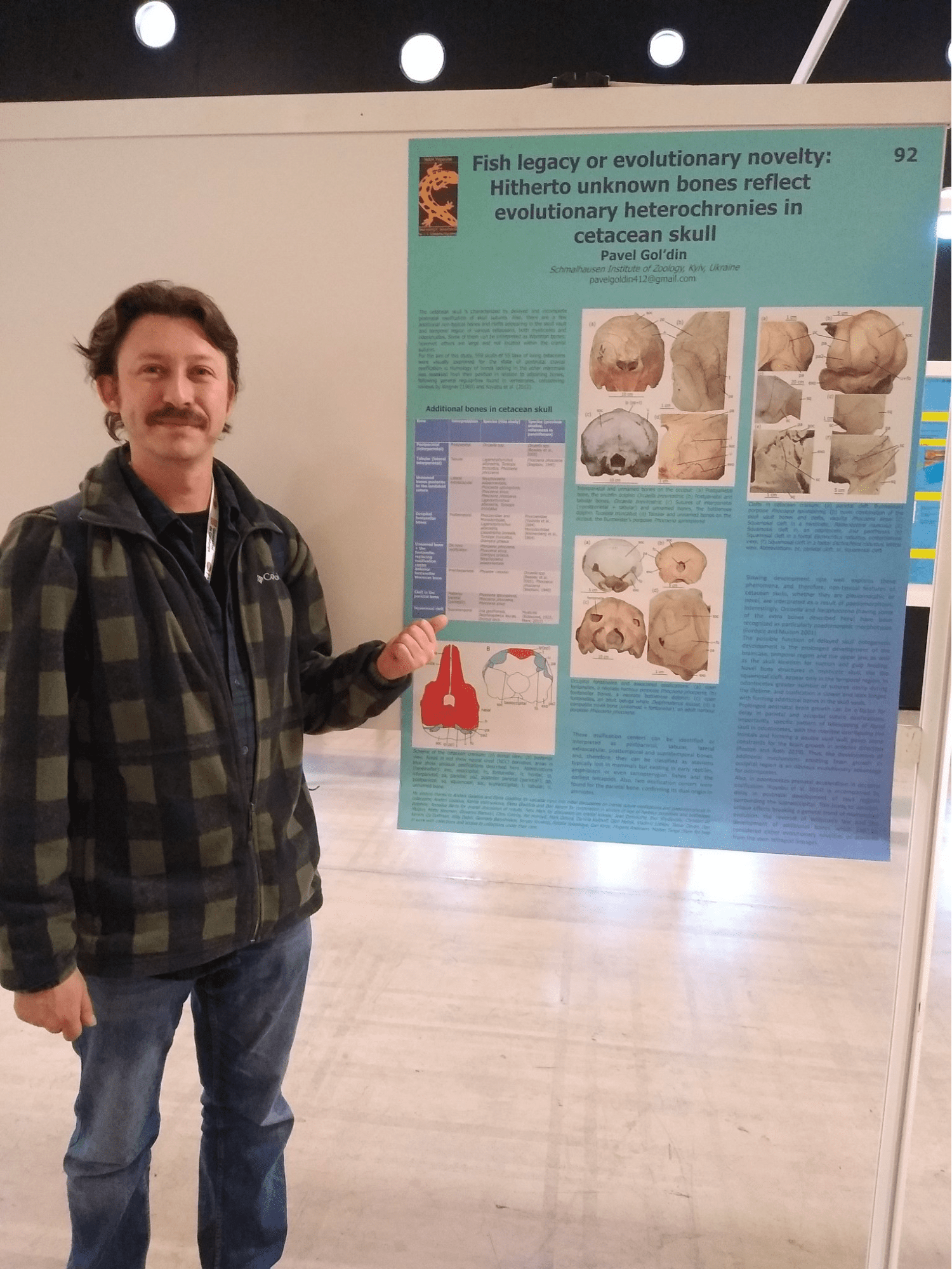
Photo: zoologist, paleontologist, and leading researcher at Schmalhausen Institute of Zoology, Pavlo Holdin. Source: Facebook page, Dolphins of the Azov and Black Seas
The Tuzly Lagoons park confirms that there were approximately 3,000 kilometers of poachers' and fishers' nets before the war in the northwestern part of the Black Sea.
"Dolphins used to get caught in these nets and die there, but there were fewer deaths than now," says Ivan Rusiev.
It was possible to say with confidence that the dolphin got tangled in the net and suffocated underwater since it is easy to determine the cause of death of a dolphin that died in the nets, according to the scientist: fishers, afraid of getting a fine for killing a red-listed animal, try to untangle the net as quickly as possible, pull out the dead body and throw it into the sea. To do this, they cut off the dolphins' fins, often leaving traces of nets on the bodies of animals.
"Looking at these signs, we understand that these dolphins were caught in the nets. Now there are no nets, and in our part of the water area, there are no dumped dolphins with net traces either. But people come across them in the Turkish part of the sea.
Poacher nets differ from the nets of legal fishers in that they can be equipped with pingers—special acoustic dolphin repellent devices that fishers install on nets; they have been used in Bulgaria and Turkey in the last two years. But here we again return to the problem of military operations: a dolphin blinded by sonar doesn't respond to pinger signals and dies in the depths of the sea, entangled in nets.
russians have killed dolphins before
The scientists of the Tuzly Lagoons park processed data from open sources and found that russian scientists blame the numerous deaths of dolphins in the Black Sea during the hostilities on infectious diseases and getting into the nets.
"We refute these versions," the Tuzly Lagoons National Nature Park employees say. "During hostilities, infections are a secondary phenomenon."
However, zoologist Pavlo Holdin, to whom Rubryka also turned for advice, notes:
"Infectious diseases are the real killer of dolphins, and it has been happening yearly, especially in recent years. Some of these diseases are caused by microorganisms entering the sea from livestock complexes. For several years in a row, infection episodes have originated in russian waters. In the North Caucasus, vast livestock complexes are concentrated there, and it may happen that they were the source of these infections, which then spread to dolphins throughout the Black Sea."
The Tuzly Lagoons park scientists are sure everything is interconnected in nature. They say the stressed dolphins weakened by sonar have sharply reduced immunity. So animals become objects of infection by infectious agents and viruses that live in them. It is primarily morbillivirus, a virus characteristic of dolphins.
"Healthy dolphins have robust immune systems and are rarely killed by infections. Therefore, the main reason for the death of dolphins is military operations," scientists say. "One way or another, we will know the answer to the question of what caused this year's deaths of the Black Sea dolphins after all laboratory tests are carried out in the world's best laboratories."
Toxins, microplastics, and chemicals
As it turned out, we know little about the Black Sea's toxicological situation.
"And we've been finding out only now, in recent years," says Pavlo Holdin. "We've begun a wide screening of various toxic substances and seen that the Black Sea has substances that we didn't even suspected before, and new ones appear every year."
According to zoologist Holdin, it happens due to technological progress, which invents new substances yearly. Ultimately, they all end up in the sea, leading to adverse outcomes.
"For example, 40 years ago, humanity was very concerned about organochlorine substances getting into the water; they led to chronic poisoning and infertility of animals. Now we can say that organochlorine compounds are becoming less frequent. However, waste pollution brings particles of microplastics with complex substances forming around them, like antibiotics. This is also dangerous because when they enter the water, the bacteria living in the marine environment develop immunity and evolve. That is, there are a lot of harmful substances, and we do not know enough about how dangerous they are. The environment is changing every day. It affects both dolphins and other marine animals," the scientist says.
Scientists from Recep Tayyip Erdoğan University conducted research last year. They found out that pollution of the Black Sea with microplastics, particularly off the coast of Turkey, is more than 1 million particles per square meter of the sea surface. Microplastics (up to 5 mm) have been found even in tiny zooplankton organisms. The cause of pollution is human activity.
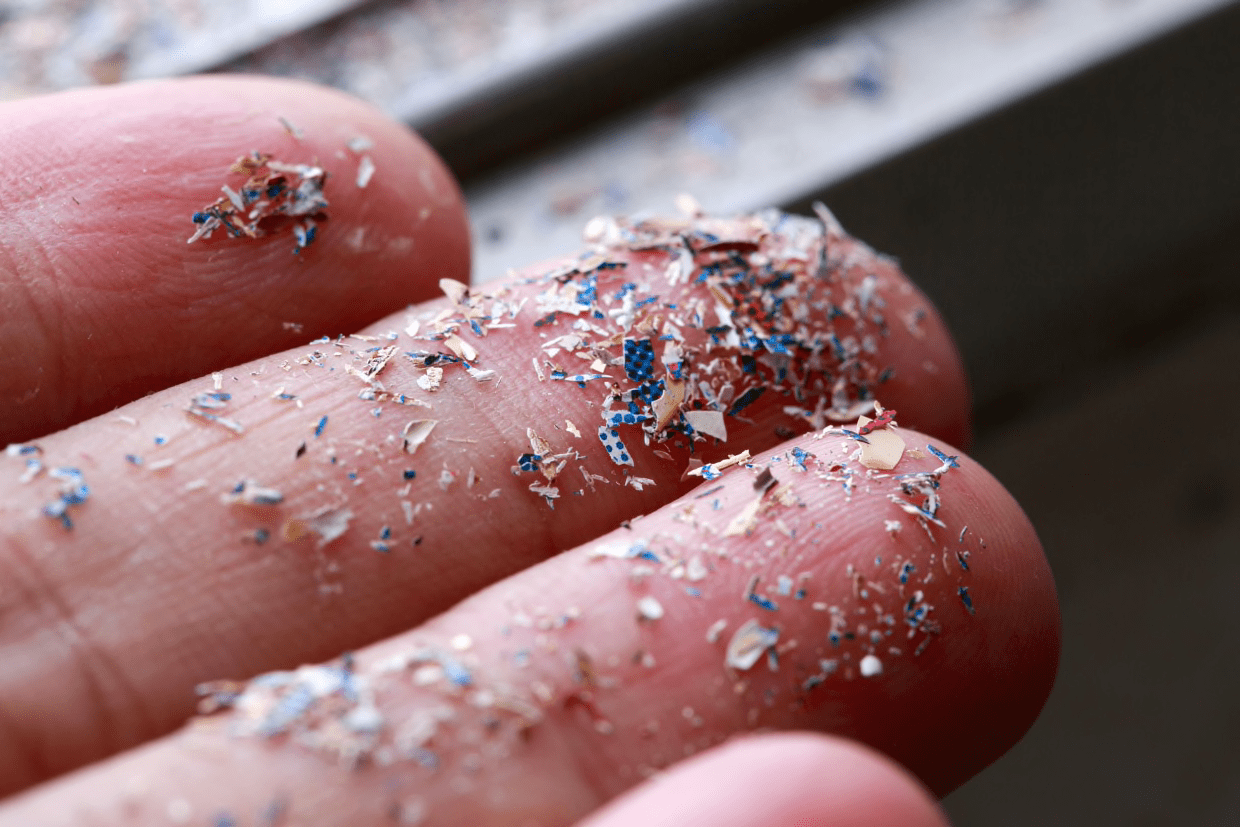
Photo: particles of microplastics that fall into the sea due to human activity. Source at the link.
Dolphinariums are places for the slow death of dolphins
Speaking of the deaths of dolphins, one cannot but mention the dolphinariums, real concentration camps for the freedom-loving sea inhabitants. Animal rights activists, including the Whale and Dolphin Conservation (WDC), call these dolphins "captives" and have even given them an awareness day, July 4, World Day for Captive Dolphins.
Activists consider it unacceptable to keep mammals in captivity because the bleach contained in the water damages their eyes and skin. Dolphins, accustomed to traveling more than 100 km a day, are in limited conditions, not to mention that the infrasound that they emit, reflected from the pool's walls, disorients them. As a result, captive dolphins live 5–6 times less than their free counterparts. The Ukrainian environmental group, Environment–People–Law, UA Animals, and many other conservation organizations have been trying to close all the dolphinariums in the country for eight years, but they still exist.
What is the solution?
Dolphin census and protected areas
It is essential to know the number of dolphins in the Black Sea to draw any conclusions; it is obvious. According to Holdin, the best way to do this is to conduct aerial surveys. It's quite an entertaining process for the scientists who do it:
"Several planes fly along planned routes, and scientists sit inside and count the dolphins they see in the sea."
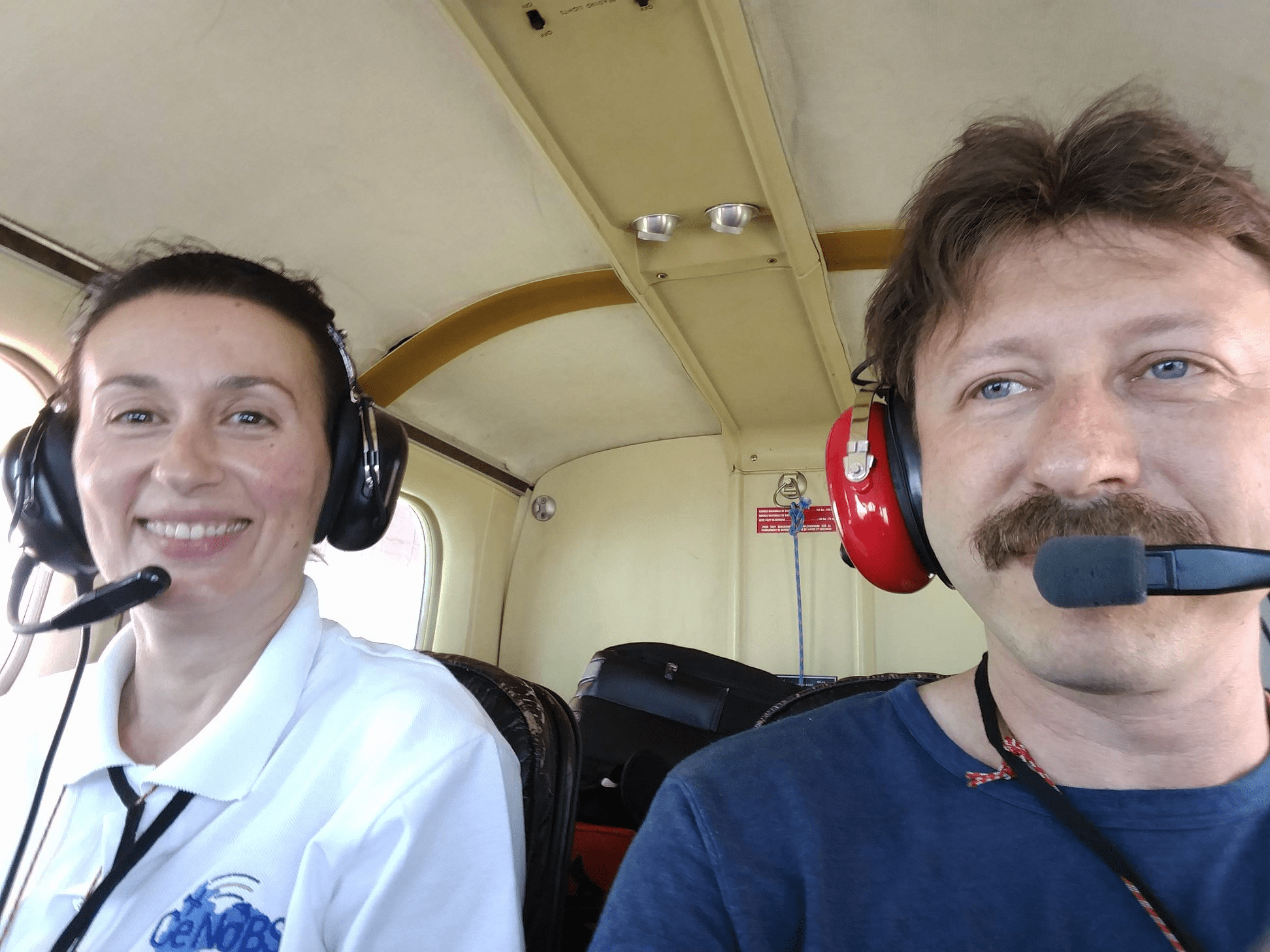
Photo: Pavlo Holdin and his colleague on the plane during the aerial survey of dolphins. Photo from the Facebook page, Dolphins of the Azov and Black Seas
Currently, such surveys are taking place in the Bay of Biscay and the waters west of Great Britain and Ireland. In the coming weeks, the same will happen in the North and Norwegian Seas; it is part of a larger count carried out in the North Atlantic. Such calculations have been carried out once every ten years, but now the scientist will repeat them every six years. Surveying this year is the second in a six-year cycle, but there were already four in general.
"Following their example, our colleagues in the Mediterranean and Black Seas and we did the same. The first survey was carried out in the Mediterranean in 2018, and in the Black Sea, in 2019. I had the honor to participate, also sat on the plane and counted dolphins," Pavlo shares. "In the Black Sea, the aerial survey was carried out by Ukraine, Romania, Bulgaria, and Turkey. Therefore, we have preliminary abundance estimates, and I hope that during the year, there will be a large scientific publication where we will discuss all models. We also hope that in 2025 we will be able to carry out a new survey after the war. I hope that by this time we will win, we will be able to fly in the waters of Crimea," says the scientist.
As for our problem, the death of dolphins, it is necessary to consistently remove all the factors of their mortality and then help restore the numbers of these animals. Mortality factors are the war, which will end in time and poachers. If everything is pretty straightforward with the first point, then for the second, we can apply some solutions right now:
"If special pingers or mechanical devices are installed on fishing nets—now experiments to improve these devices are carried out in Bulgaria and Turkey—we can hope that the death rate will decrease by five times," Pavlo Holdin gives an optimistic forecast based on experimental data by Dimitar Popov's team in Bulgaria. "If you remove or reduce other factors of death, then, of course, it will be much easier for the population to recover from these hostilities," the scientist believes.
The difficulty is that reproduction in dolphins is a long process. Ivan Rusiev explained this to us:
"They give birth once or twice a year, and only one dolphin is born, which means that it will be complicated to restore the population, at least to the pre-war level. An important aspect is to avoid the threat from poachers and fishers after the war. Now there is not a single net because of the war; no one is allowed in. Therefore, after the war, poachers and fishers should not be allowed into the sea in those places where dolphins breed and where they live; it is essential to create large areas of national parks and reserves. There should be a national park with an area of 2–3 thousand square kilometers, where dolphins will be protected. Tourists will not go to the dolphinarium and look at the unfortunate dolphin in a cage but will come on boats and watch dolphins in the wild. In this way, we can avoid the death of dolphins in nets and cages. We will have to wait 10–15–20–50 years, but this will be a chance for the dolphins."
Protected parks, which Ivan Rusiev speaks of, should be created in the northwestern Black Sea. The area is large, at least 3,000 square kilometers. A way out could also be increasing the Tuzly Lagoons National Natural Park's water area, where the scientists will restrain any aggressive factor in the name of reproduction and restoration of populations.
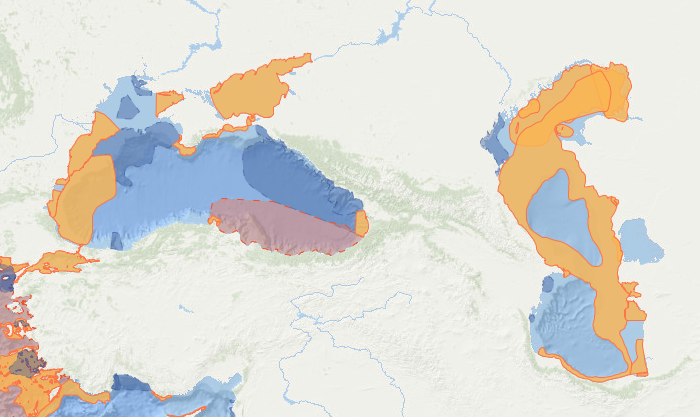
On the map: list and boundaries of water areas important for conserving marine mammals in the Black and Caspian Seas, officially approved by the International Union for the Conservation of Nature. Source: Marine Mammal Protected Areas Task Force
"No matter how sad it is, despite the terrible consequences of ruscists for dolphins and wildlife, nature will still recover. The incredible synergy of steppe plant waves, along with birds, plants, waters, dawns, ants, and everything on all fronts, help Ukrainians with its powerful and positive energy in the fight against the enemy," Ivan Rusiev summed up.
We believe that there's no more inspiring end for this article. Next, we will move from the sea to the land and discuss the importance of creating nature reserves and what forces nature will use to restore the lands mutilated by arable land and industries. Stay tuned for Rubryka's updates.
The article was prepared as part of the competition, Environmental Chronicles: How Russia's Invasion Affects Ukraine's Environment, implemented by the NGO Internews-Ukraine with the financial support of Journalismfund.eu.
Newsletter
Digest of the most interesting news: just about the main thing




